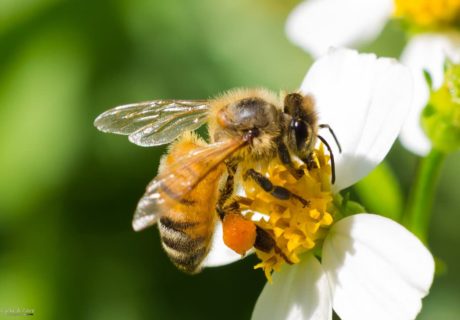Is it time we stopped blaming all grains and acknowledge that they have been part of humanity’s evolution for the last million years? asks Patrick Holford
There’s a big trend among the health conscious for gluten-free foods and blaming grains, which provide two thirds of humanity’s calories, for the epidemic of obesity and diabetes. Banting and Atkin enthusiasts, and Paleo people all talk about shunning grains, yet you may be surprised to find out that ancient grains may have been essential for building our advanced human brains and civilisation to boot. Also, the surprising new evidence that some ancient wheat may be positively good for you.
To put this in context, a study of over 104,000 deaths, published last month in the American Journal of Clinical Nutrition concludes that there is ‘significant inverse relationships between whole-grain intake and mortality due to any cause, CVD, or cancer.’ Others show diabetes and heart disease risk cut by a quarter in high wholegrain eaters. But let’s start at the beginning, as we know it, both in relation to grains and our brain.
Evidence of ancient faecal remains show we ate these ancient grains ground, sometimes eaten raw or cooked into bannocks or pancakes, thus breaking down cell structures, more than a million years ago. The first evidence of cooking is about 1.8 million years ago, coincidental with our ancestor’s brain size starting to increase. Around a million years ago, the DNA record of our ancestors shows that they start to have multiple variations in amylase enzymes, needed to turn cooked starch into glucose. ‘Consumption of increased amounts of starch may have provided a substantial evolutionary advantage to Mid-to-Late Pleistocene omnivorous hominins.’ concludes a study from the University of Sydney.
During the Pleistocene period the last Ice Age hits. Grain kernels were taken south, especially those that came from plants whose kernels did not spontaneously shell out of the head by the wind to sow themselves.This feature allowed early man to harvest certain grains while it was still attached to the grain head. The only way to survive was to collect the most transportable grains and take them to lower, warmer areas. Many wild cereals people had relied on before, disappeared from the menu. By the end of the Ice Age it’s mainly wheat, rye and barley that our ancestors are eating in Mesopotamia – all gluten grains.
Grain cultivation led to the formation of villages. Ploughing led to greater yields. Grain stores meant more security. Population growth ensued. Peasant farmers did better than hunter gatherers and increasingly took over.
It is a great shame that, of the 195,000 species of flowering plants that produce edible parts which could be utilized by man less than 0.1%, that’s fewer than 300 species, are used for food. Three cereals – wheat, maize and rice – together comprise at least 75% of the world’s grain production and half humanity’s protein. Grains stand between mankind and starvation. Until refining processes such as the milling of white flour started a little over 100 years ago, all these grains were eaten as whole grains.
Jumping forward, between 10 and 30% of people with digestive problems, auto-immune diseases or relatives with coeliacs, have coeliacs. Why? Gluten(gliadin) triggers the release of zonulin which opens up the ‘tight junctions’ between the gut’s epithelial cells, letting gliadin partially through, to which the gut’s highly active immune system goes bananas. Many more people, perhaps one in five, have non-coeliac gluten sensitivity. But is this a natural consequence of all wheat or is it to do with something we’ve done to it? Modern wheat, to make a cheaper loaf, has been through hundreds of hybridisations.
A Montana organic farmer of 30 years, Bob Quinn, has now helped farmers in his own state as well as adjoining states and Canadian provinces to convert 80,000 acres to grow ancient Kamut®khorosan wheat organically. Khorasan is an ancient wheat that has not undergone one hybridisation since is was grown by ancient civilizations before recorded history began. Sixteen studies later, all published in peer reviewed scientific journals, a pattern is emerging. One study shows that rats fed modern wheat do indeed get small intestinal villi atrophy, but those fed Kamut wheat do not. Four of the most recent clinical trials – on diabetics, cardiovascular patients and those with IBS – show that modern wheat increases inflammatory markers while Kamut wheat does the reverse. It is clear that human physiology is treating this ancient grain as a friend not a foe. It is not deadly bread, unlike most people’s modern, genetically altered and refined daily bread.
Some believe the solution to humanity’s 21st century ills is to avoid all carbs and eat a ‘paleo’ diet. Why go Paleo? Why not Pleisticino? Was there ever a ‘perfect’ point in prehistory, a Garden of Eden, that fixes our definition of a perfect diet? Or was the Garden of Eden in the bread belt? Epigenetics shows we evolve, and have evolved with grains. Modern grains, as opposed to ancient grains, may have just evolved a lot faster than we can handle. Are we in danger of throwing the baby out with the bathwater when, perhaps, all we need do for better health is eat whole, organic ancient grains such as Kamut khorosan, whole oats, brown rice, barley, rye, quinoa and buckwheat, albeit in controlled amounts, which have been less genetically altered than wheat. Is it time we stopped blaming all grains and acknowledge that they have been part of humanity’s evolution, including brain development, for the last million years and probably will be the foreseeable future.





